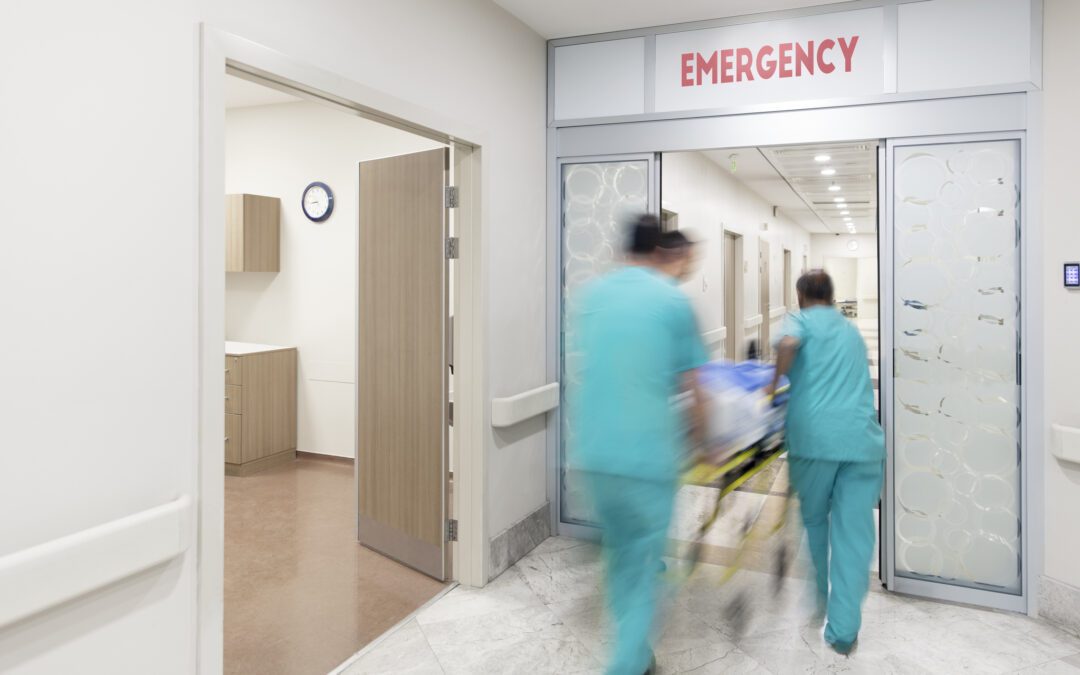Recently, I had the rare opportunity to shadow an ER physician during a 12-hour shift at a rural  Georgia hospital. The physician had obtained permission from hospital administration and explained that my presence might help identify potential system failures that could compromise patient safety. To my surprise, the hospital welcomed my visit. Witnessing the daily realities of emergency medicine provided invaluable insights into the complexities, challenges, and standards of care that define a high-pressure ER environment. This experience not only deepened my understanding of medical practice but also highlighted critical factors relevant to malpractice cases and patient safety.
Georgia hospital. The physician had obtained permission from hospital administration and explained that my presence might help identify potential system failures that could compromise patient safety. To my surprise, the hospital welcomed my visit. Witnessing the daily realities of emergency medicine provided invaluable insights into the complexities, challenges, and standards of care that define a high-pressure ER environment. This experience not only deepened my understanding of medical practice but also highlighted critical factors relevant to malpractice cases and patient safety.
Before I began observing, I made sure to research ethical guidelines and HIPAA regulations to ensure full compliance with patient privacy laws. The physician personally obtained consent from each patient, demonstrating professionalism and transparency. To avoid standing out, I ordered a pair of hospital scrubs, preparing myself for the shift ahead. Once ready, I immersed myself in the daily rhythm of emergency care.
From 7:30 a.m. to 7:30 p.m., I observed a wide range of cases and the rapid pace of decision-making. The doctor split his time between bedside patient assessments and computer work—entering orders, reviewing lab results, and updating charts. I estimate about 15% of the time was spent at the bedside, with the remaining 85% dedicated to documentation and data review. This routine clarified how critical meticulous documentation and quick, accurate decision-making are in evaluating the standard of care and potential liability in malpractice disputes. I was fortunate that my physician was an excellent teacher; during moments of downtime while awaiting test results, he explained the significance of various lab tests and provided detailed guidance on interpreting EKGs.
One of the most urgent cases involved a patient suspected of having Cauda Equina syndrome, a true emergency where the nerve roots at the bottom of the spine are compressed and can cause nerve dysfunction. True Cauda Equina requires swift intervention to avoid permanent neurological damage. The doctor’s efforts to secure a neurosurgery consult, which unfortunately went unanswered, underscored how delays and communication breakdowns can significantly impact patient outcomes and legal accountability. Fortunately, the doctor was able to transfer the patient to a higher-level care hospital equipped with neurosurgical services.
Throughout the day, I also observed cases involving severe psoriasis covering the entire chest and back, a fractured humeral head, and a patient suffering from abdominal fluid due to Hepatitis A and B, leading to liver failure. I witnessed a lively debate between the ER physician and a hospitalist about whether a patient should be admitted locally or transferred elsewhere. These situations highlighted the importance of clear, decisive communication and thorough documentation, especially when disagreements or conflicts arise. The ER doctor also conducted numerous cardiac evaluations, reviewing EKGs for signs of heart attack and analyzing lab results for enzyme levels.
A particularly poignant moment came when a young woman was confirmed by ultrasound to have suffered a miscarriage. Watching the physician navigate sharing this difficult news with compassion and professionalism reinforced the emotional toll that emergency medicine can take. “I never leave a patient’s side after they have suffered a tragedy,” the doctor told me. “Not until I’ve answered every question, and they have assured me I have done all I can. It’s so important for them to know I’m here for them as they process the tragic news,” he explained.
Throughout the day, I gained firsthand insight into the importance of teamwork and clear communication. The dedicated staff—including nurses and EMTs—worked tirelessly under stressful conditions. Nurses and techs executed orders efficiently, from drawing labs to performing bedside imaging, all while maintaining constant communication with the medical team.
Interactions with EMTs provided a detailed view of pre-hospital care and revealed several complexities. I noticed discrepancies in their documentation, such as recorded times that seemed inconsistent—perhaps influenced by a desire to present quicker response times. Recognizing these issues is vital in malpractice cases, where precise documentation can strongly influence case outcomes. Furthermore, reviewing cases like that of an elderly woman who fell and may have suffered a concussion highlighted the intricacies of triaging multiple emergencies simultaneously. These experiences underscored the importance of clinical judgment and meticulous documentation in emergency medicine.
The physical and mental demands of this work were readily apparent. Standing or sitting at the workstation with minimal breaks illustrates the demands ER physicians face daily. Observing their decision-making processes, communication, and resourcefulness offered essential context for
assessing whether they meet clinical standards of care.
This immersive experience has greatly enhanced my ability as a trial lawyer to analyze emergency care for potential malpractice issues. Understanding the realities, challenges, and decision-making pressures faced by ER doctors allows me to evaluate cases more effectively—particularly how communication and documentation influence liability and how systemic factors impact patient
outcomes.
Ultimately, this experience strengthened my respect for emergency practitioners and equipped me with concrete knowledge that will inform my future legal practice. It enables me to advocate more convincingly for clients and to promote higher standards of patient care, ensuring that lessons learned in the ER translate into better legal judgments and healthcare practices.

